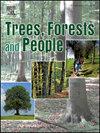Long-term monitoring of mangrove expansion and shoreline degradation in the Farasan Islands using Landsat data (1993–2023)
IF 2.7
Q1 FORESTRY
引用次数: 0
Abstract
Mangroves are among the most productive ecosystems on Earth, but due to urbanization and deforestation activities, this ecosystem has been declining for several decades. This study focused on the Farasan Al-Kabir Islands and utilized Landsat satellite imagery to comprehensively assess the changes in mangroves and the overall status of islands from 1993 to 2023. A time series analysis spanning three decades with 5 year intervals provides authentic and significant results. The findings indicate a positive trend in both the vegetation index and moisture index, with the most notable effects occurring between 2013 and 2023. However, the shoreline of the Farasan Al-Kabir Islands has decreased, with degradations being a primary concern. The reduction in shoreline highlights an alarming situation and the impact of global warming on islands. Despite these challenges, the mangrove area has increased by 3.55 square kilometres over the past three decades, with significant growth observed on eastern and northern sides of the Farasan Al-Kabir Islands, as well as on Zifaf Island. This study underscores resilience of mangrove ecosystems in the Farasan Al-Kabir, despite the ongoing threats posed by sea-level rise and shoreline degradations. The expansion of mangrove cover is a positive indicator that reflects the adaptive capacity of these ecosystems. However, the simultaneous reduction in shoreline due to degradations presents a serious challenge that could threaten the long-term sustainability of islands coastal environments.
利用Landsat数据长期监测法拉桑群岛红树林扩张和海岸线退化(1993-2023)
红树林是地球上最多产的生态系统之一,但由于城市化和森林砍伐活动,这一生态系统几十年来一直在下降。本研究以Farasan Al-Kabir群岛为研究对象,利用Landsat卫星图像对1993 - 2023年红树林变化和岛屿整体状况进行了综合评估。时间序列分析跨越30年,间隔5年,提供了真实和重要的结果。结果表明,植被指数和湿度指数均呈上升趋势,其中2013 - 2023年的影响最为显著。然而,Farasan Al-Kabir群岛的海岸线已经减少,退化是一个主要问题。海岸线的减少凸显了令人担忧的情况以及全球变暖对岛屿的影响。尽管面临这些挑战,红树林面积在过去三十年中增加了3.55平方公里,在Farasan Al-Kabir群岛的东部和北部以及Zifaf岛观察到显著的增长。这项研究强调了Farasan Al-Kabir红树林生态系统的恢复能力,尽管海平面上升和海岸线退化构成了持续的威胁。红树林覆盖面积的扩大是一个积极的指标,反映了这些生态系统的适应能力。然而,由于退化而导致的海岸线同时减少是一个严重的挑战,可能威胁到岛屿沿海环境的长期可持续性。
本文章由计算机程序翻译,如有差异,请以英文原文为准。
求助全文
约1分钟内获得全文
求助全文
来源期刊

Trees, Forests and People
Economics, Econometrics and Finance-Economics, Econometrics and Finance (miscellaneous)
CiteScore
4.30
自引率
7.40%
发文量
172
审稿时长
56 days
 求助内容:
求助内容: 应助结果提醒方式:
应助结果提醒方式:


